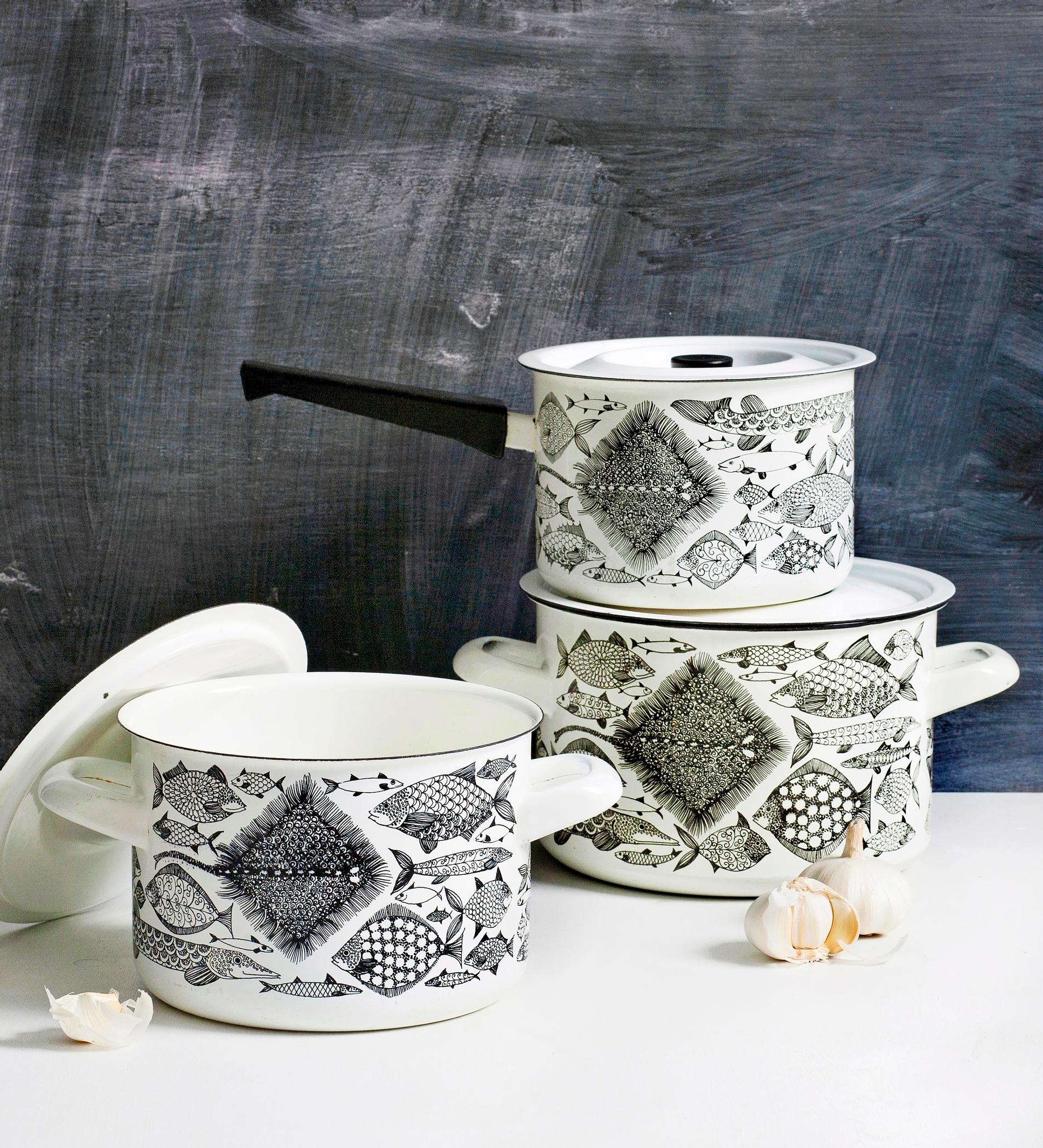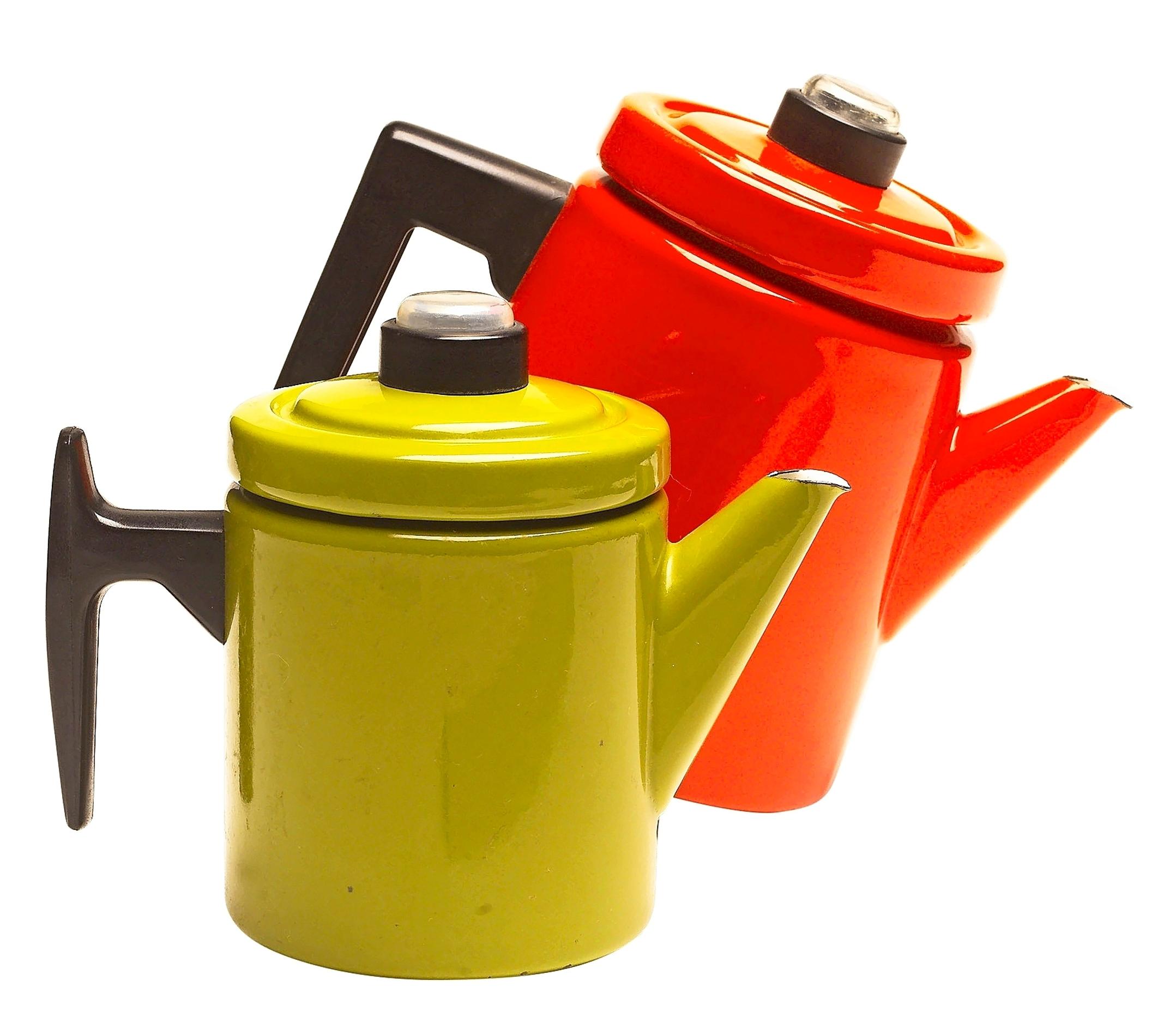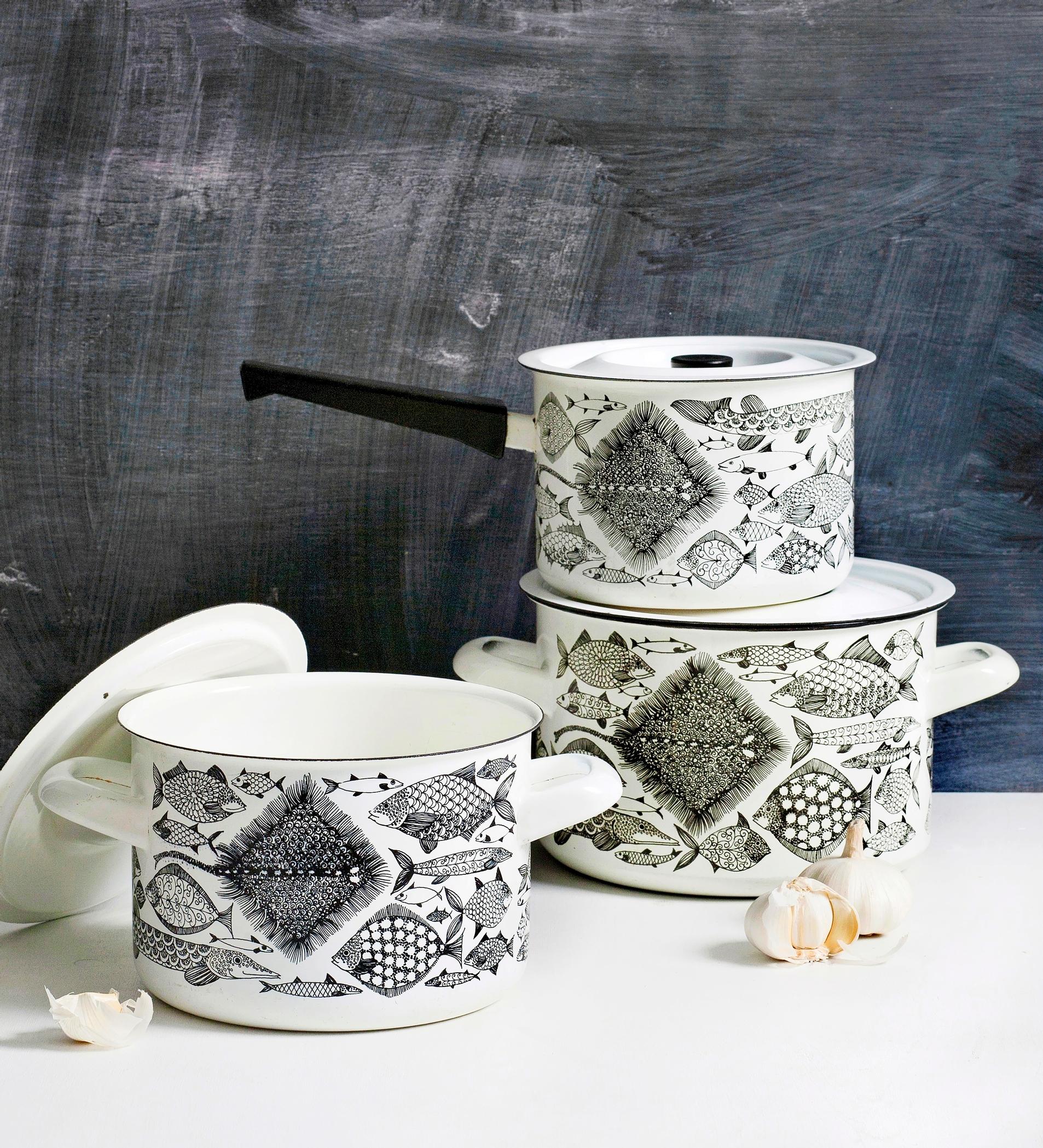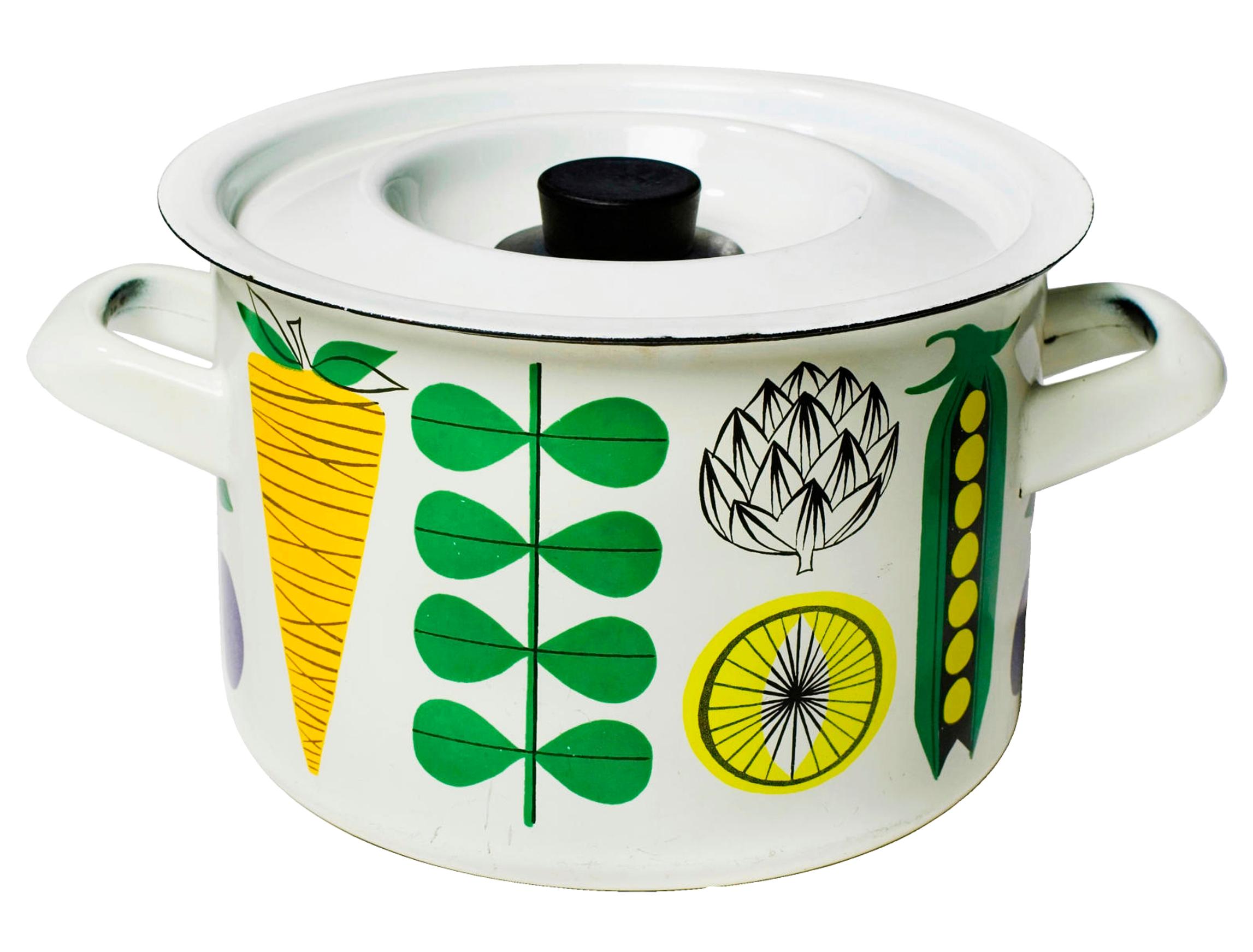
Nostalgic Pehtoori or colorful Vegeta—what’s your favorite Finnish enamelware?
Enameled coffee pots, cooking pots, and enamelware were popular everyday items in the 1950s and 1970s. Some of the most vibrant ones were designed by leading names in Finnish design and decorative arts, such as Kaj Franck and Antti Nurmesniemi.
The enameling technique, which fuses a thin layer of glass to a metal surface, dates back to the 15th century BCE and was initially used for precious items like jewelry. Enamel surfaces were only introduced to everyday objects in the late 18th century.
During the 18th and 19th centuries, enameling technology advanced rapidly across Europe, spurred by research and even scientific competitions. Several enameling factories were opened in the 19th century, and by mid-century, enamel had become widespread for everyday use.
Early enamel items included cooking utensils and bathroom accessories. As methods improved, artisans began enameling stoves, bathtubs, sinks, kitchen scales, and hygiene products. Enameled signs and road signs also appeared in cities.


The earliest known Finnish company in this field was Uleåborgs Emaljverk in Oulu, northern Finland, operating from 1902 to 1905. Other key pioneers included Högfors in Karkkila, where an enameling facility for cast-iron products was founded in 1926. Meanwhile in Helsinki, Kone ja Silta Oy began enameling sheet-metal items in 1935.
Finnish enamelware initially consisted of buckets, basins, chamber pots, coffee pots, cooking pots, bowls, and cups. Early designs were openly modeled on Central European production—there were no copyrights and copying was commonplace—so many factories’ products looked almost identical.
“Enamelware has the durability of metal and the elegance of porcelain.”
Enamelware caught on quickly in Finland for its practicality.
“Enamelware has the durability of metal and the elegance of porcelain. It is completely hygienic, and cleaning it is simple. It is refined enough to grace even the most luxurious kitchen, yet it is at the same time affordable enough for a more modest kitchenette. In every sense of the word, enamelware truly is for everyone,” Kone ja Silta Oy enthused in 1935.
Design took center stage after World War II, when companies began hiring designers and creating their own product lines. The most prominent brand was Finel, founded by Kone ja Silta Oy in the late 1950s.


Finel’s tableware collection was designed by artists from the Arabia porcelain factory and the Nuutajärvi glass factory. Leading the Finel team was a major name in tableware design, Kaj Franck. In 1957, Franck sketched a versatile series of bowls inspired by the minimalist style of his Kilta series—these bowls’ only ornamentation was their bold enamel hue.
Another iconic Finel piece is Antti Nurmesniemi’s Pehtoori coffee pot, launched in 1958. Cheerful and modern, it remained popular until electric coffee makers became widespread in the 1960s.


Not every Finel product was strictly minimalist; many coffee pots and cooking pots had traditional silhouettes. Starting in the early 1960s, Arabia designers added decorative motifs for extra punch. Some of the most beloved patterns were Esteri Tomula’s vegetable- and plant-themed Vegeta line, Tatti mushroom patterns, and the fish-themed Neptun series, as well as Raija Uosikkinen’s [in Finnish] Punahilkka— and Sinihilkka coffee pots.


